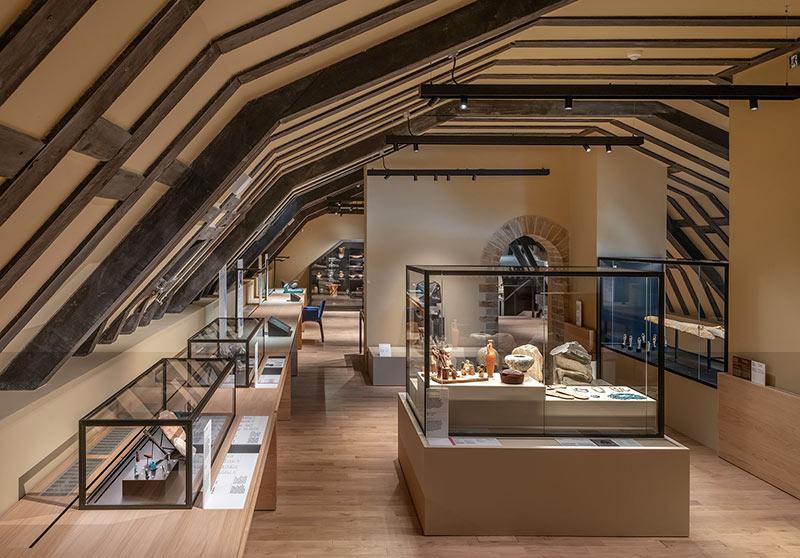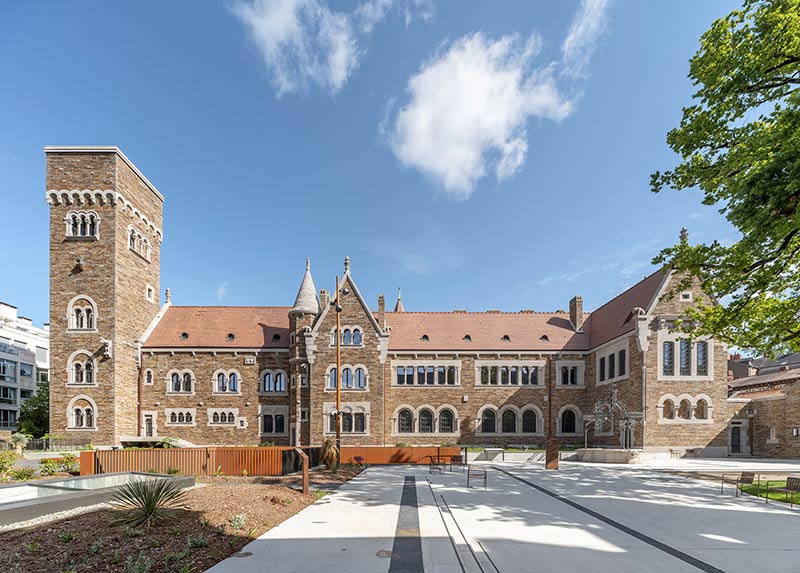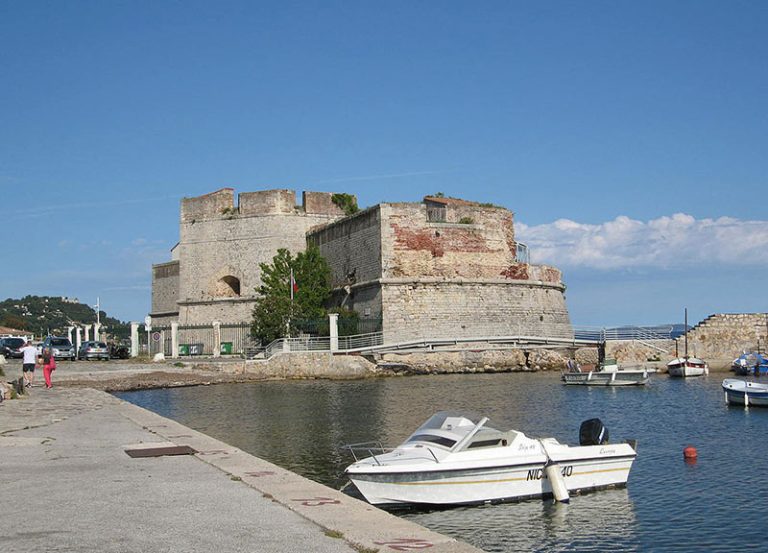Will May 18 seal the end of the curse of the Musée Dobrée? This is what we wish for the Nantes establishment whose fate is akin to a real Arlesian, punctuated by endless twists and turns since its closure for renovation twelve years ago. The institution, which some compare to a ZAD as it has crystallized the debate, has seen its work postponed several times due to appeals filed by local associations denouncing the architectural choices. The initial project designed by Dominique Perrault was abandoned and it was ultimately that of the Novembre workshop which was implemented. Project also contested despite its respect for existing heritage. An additional blow, the site saw its Mona Lisa, the reliquary of the heart of Duchess Anne of Brittany, stolen in 2018. The piece of goldwork was miraculously found safe and sound, but this theft further strengthened the idea that evil spirits hover over the museum. Today, he hopes to turn the page and move forward, carried by the breath of a long-awaited reopening. We can bet that the very successful work will put an end to these tumults and give new impetus to this institution, born under the best auspices in 1899.
Medieval-inspired palace and 15th-century manor
Its founder Thomas Dobrée (1810-1895) indeed saw the big picture to house his splendid collection. The Nantes resident simply asked Eugène Viollet-le-Duc, the “arch star” of the moment, to design a medieval-inspired palace to house him. However, the sponsor is very demanding and has a precise idea of what he wants, so he unhesitatingly rejects the master's plans, which are too neo-Gothic for his taste. As you are never as well served as by yourself, Dobrée takes her pencil to draw out the house of her dreams. He takes his attention to detail to the point of imagining the animals gurgling on the roof, with a predilection for bears, but also the imaginative bestiary of the capitals capping the columns of the entrance hall. Resolutely neo-Romanesque, this immense building dialogues elegantly with the La Touche manor, a former 15th century episcopal residence enthroned in the heart of the block it acquired. The owner had initially planned to present his treasures in this historic building. A project compromised by the irresistible expansion of this river collection. Especially since, since then, the spirit of the museum has evolved considerably: in addition to Dobrée's acquisitions, it has been decided that the place will also house the collection stored in the tiny Archaeological Museum of Nantes. From the outset, this place with its false appearance of Hogwarts presents itself as a real patchwork. An architectural collage, further accentuated by the erection, in the 1970s, of a brutalist building which completes the landscape; but above all an explosive mosaic of collections. At the inauguration, archaeological pieces occupy the ground floor while medieval and bibliophilic pearls gleaned by the founder in the most prestigious public sales illuminate the first floor.
Room of the Dobrée Museum.
© Luc Boegly
As a man of his time and his rank, Dobrée elevates collecting to the rank of art of living. A room collector, he hardly ever travels and methodically selects the most beautiful objects from the catalog. Son of a rich shipowner, from whom he inherited, among other things, the collection of Asian objects, he uses art to establish his surname, he who is not of aristocratic extraction unlike the good society of Nantes. He is thus distinguished by the finesse of his choices and the pedigree of the pieces that he steals from museums and great fortunes. At Prince Alexis Soltykoff's sale, a famous sale from the Second Empire, he offered, for example, the exceptional shrine of Saint Calmin and a magnificent medieval aquamanile. Two objects that still make the museum’s reputation. The decisive impetus that Dobrée brought to his museum encouraged, until the 1950s, a host of donors to follow his example. Their generosity and eclecticism have given the establishment its original tone. There are indeed few places to collect medals and coins, pieces of archaeology, ethnography, but also jewelry, Art Nouveau vases and historical weapons. Without forgetting the memories linked to the Vendée wars which are among the most admired objects in the museum. The redesign of the site fully asserts this collector's house DNA and judiciously plays the card of intimacy and the history of taste. The scenography inspired by Adeline Rispal takes strong positions such as this wall-library sublimating the ceramic collection, and the common thread of the hanging: a series of alcoves telling singular stories rather than a history of art . Restructured from the cellar to the attic, the site displays 2,400 objects, including 1,900 restored, in a clever circuit that arouses curiosity; auguring the best for this place finally out of the turmoil.

Room of the Dobrée Museum in Nantes.
© Luc Boegly
The biggest surprise of the new route is undoubtedly its attic which now houses new collections. This space with its very enveloping architecture is in fact the showcase for Mediterranean collections, but also non-European ones from America, Africa and Asia. The latter have practically never been shown or studied. The renovation was therefore an opportunity to tackle this hot topic, because as we know, the provenance of these objects is a sensitive subject today. Rather than ignoring this problem, and continuing not to show these pieces, the institution has chosen to take on the debate and reconstruct their history to shed, as much as possible, light on their conditions of acquisition. . Many of these pieces were in fact purchased in the colonial context or found by scholars. So far, research has shown that none were the result of looting or had been the subject of a claim.
An extension of glass and steel
The museum underwent a major renovation, costing 50 million euros. The most emblematic architectural gesture of the Novembre workshop is the construction of an extension in glass and Corten steel, a metal which blends harmoniously with the heritage. This extension which follows the facade of the manor aims to improve circulation within this building dedicated to exhibitions, by installing an elevator making the site accessible to people with reduced mobility.
Lifting from cellar to attic
The restoration of the collection represented a real project within the project: it lasted five years and mobilized a multitude of trades. The building has also been pampered since the roofs of the manor and the house have been taken over. The foundations of the palace were also consolidated and waterproofed in order to transform the beautiful vaulted cellars into exhibition rooms. The different facades as well as the tower and the sculptures have also been restored.
Precious heart of Duchess Anne
Present at the museum since its inauguration, the funerary casket of the heart of Anne de Bretagne (1477-1514) is the Mona Lisa of the collections. This exceptional piece of goldwork is also a true miraculous piece of history. Its theft in 2018 is just one of the many adventures that the reliquary has experienced since 1514! Seized during the Revolution as Church property, it escaped being melted down at the last minute. Then exhibited at the National Library, its return to Nantes was the subject of fierce negotiations.
36 exhibition rooms
The renovation brought the various spaces of the residence up to standard, now offering 36 exhibition rooms spread over four levels, from cellars to attics, for a total surface area of 2,000 m2. The rooms have been redesigned into a succession of alcoves evoking the multiple donors as well as different facets of the collection. The immense sculptures and ornate sand beams, coming from the old Archaeological Museum, are now displayed in a beautiful medieval room.







